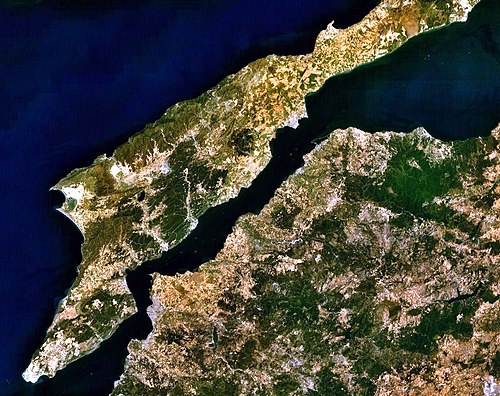More actions

The Dardanelles is a narrow strait in the northwestern area of Turkey that connects the Aegean Sea with that of the Sea of Marmara. Roughly 38 Miles (61 kilometers) long, it varies in width from 3/4 miles at its narrowest to 4 miles at its widest (1.2 to 6 kilometers). The strait connects the Black Sea to the Mediterranean Sea; in addition to this it separates mainland Europe (on the western side of the Gallipoli peninsula) to that of mainland Asia (on the eastern side).
This article is a little light on content.
You can help the Lonsdale Battalion Wiki by jumping in and making some edits to expand it. See Category:Stub articles for some other pages that are also feeling left out and could do making new friends.
